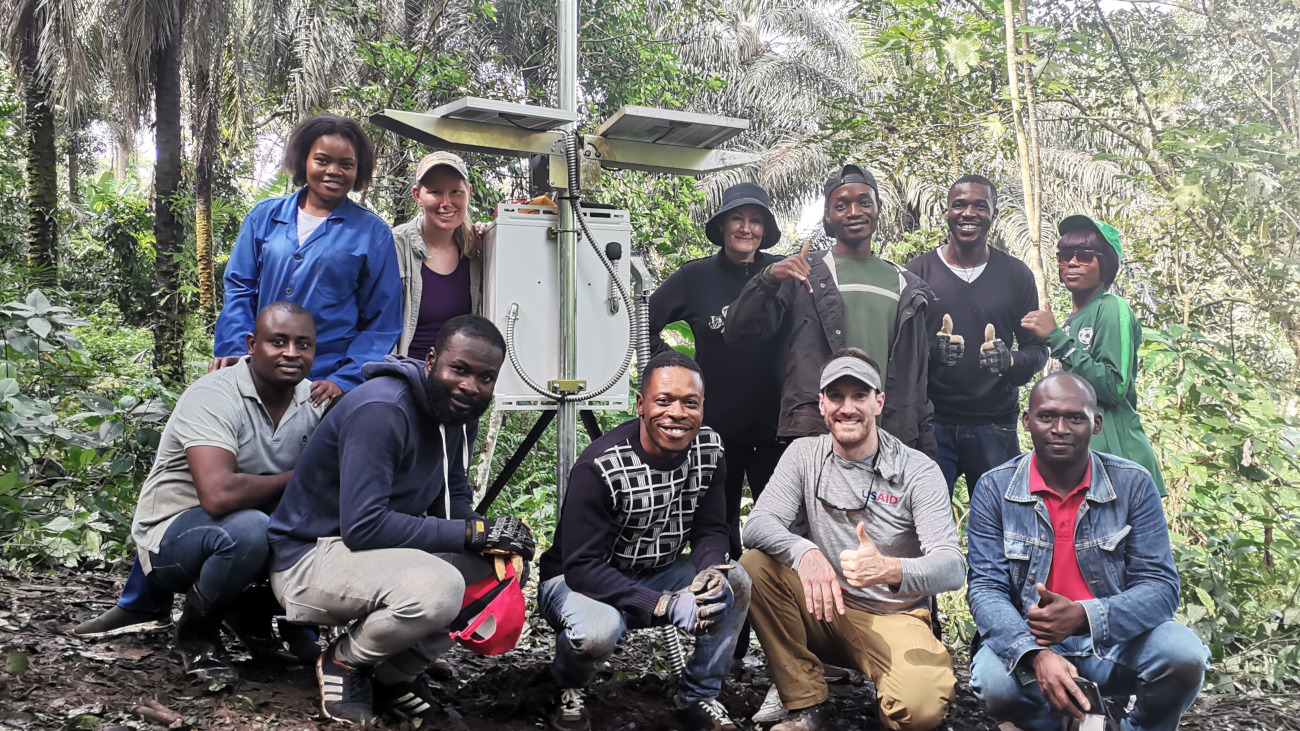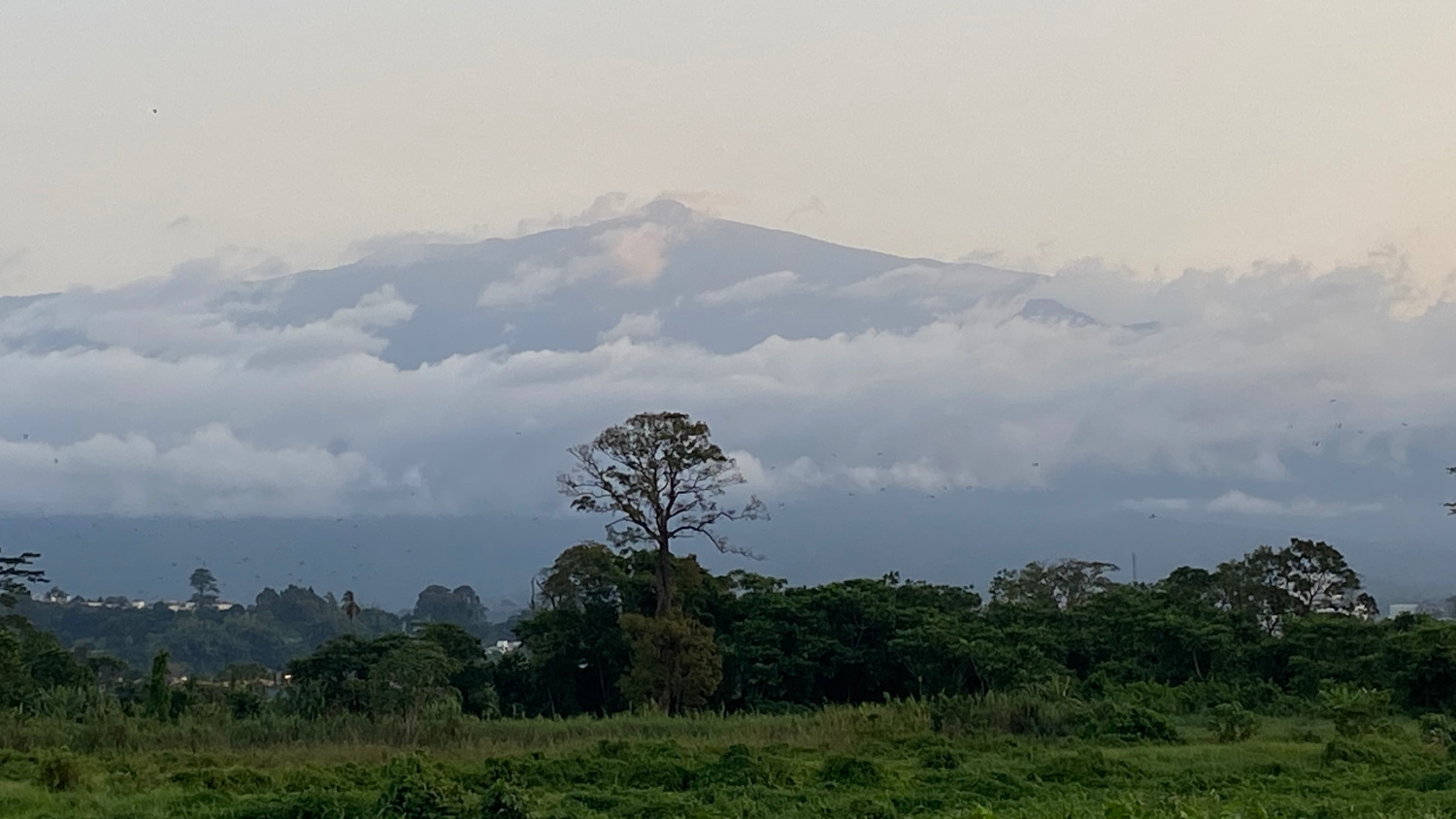(BIVN) – There was a Hawaiʻi connection in this week’s Volcano Watch article about a new monitoring program for Pico Basile volcano in Equatorial Guinea.
From this week’s article, written by U.S. Geological Survey Hawaiian Volcano Observatory scientists and affiliates:
In 2012, steam began to rise from beneath the cracked concrete of a telecommunication station at the summit of Pico Basile volcano on Bioko Island, Equatorial Guinea, in western Africa. The steaming lasted several days and extended to two nearby summit craters.
Fortunately, the event didn’t escalate beyond some baked vegetation and the slightly fried nerves of station personnel. The volcano had been in a state of quiescence, slumbering peacefully for nearly a century, and this event served as a not-so-subtle reminder that Pico Basile could wake up at any time—and it was completely unmonitored.
Pico Basile is a shield volcano located at the center of the enigmatic Cameroon Volcanic Line (CVL) in western Africa. Like the volcanoes in Hawaii, it features basalt lava flows, scoria cones, and tuff rings. Pico Basile is the second-most active volcano on the CVL, after Mount Cameroon, which is 65 km (40 mi) to the northeast on the African continent. The most recent series of recorded eruptions on Pico Basile took place from the 1890s to 1923. These eruptions impacted population centers on the South and East flanks of the volcano. Malabo, the capital city of Equatorial Guinea with a population of approximately 300,000 people, is located on its northern flank.
Potential eruption hazards from Pico Basile are similar to those in Hawaii and include earthquakes, lava flows, ballistic projectiles, and volcanic gases including sulfur dioxide (SO2). Even in its current quiescent state, hazards on Pico Basile include carbon dioxide (CO2) accumulation, landslides, and wildfires.
Since 2017, international researchers had been working to assess the state of activity at Pico Basile and piece together its eruptive history. The 2021 disaster on La Palma, Spain, where Cumbre Vieja erupted after 50 years of quiescence destroying over 3000 buildings and displacing over 7,000 people, highlighted the importance of monitoring quiescent volcanoes. Following that eruption, it became apparent that foreign research was not enough; the people of Equatorial Guinea needed the ability to monitor their volcanoes from within their own country.
In 2023, the National University of Equatorial Guinea (UNGE) partnered with a Research Corporation of the University of Hawai‘i affiliate staff member of the USGS Hawaiian Volcano Observatory through the Fulbright Specialist Program. With support from the U.S. Agency for International Development–USGS Volcano Disaster Assistance Program (USAID-USGS VDAP), they created the first volcano monitoring program in Equatorial Guinea for Pico Basile volcano.

USGS: “The UNGE team with a newly installed seismic station. Also pictured is Dr. Christine Sealing (Fulbright Specialist), top row second from left, and Aaron Rinehart (USAID-USGS VDAP) bottom row second from right.”
The backbone of the new volcano monitoring program is a team of eight UNGE staff and two students who participated in a month-long workshop where they gained a broad understanding of volcanology and volcanic hazards, including the history and hazards specific to Pico Basile. They also learned essential field engineering techniques and installed four broadband seismic stations around the volcano to detect earthquakes. Using data from previous research stations, the UNGE team received training in seismic analysis and learned to recognize signs of volcano seismic unrest. Although in its infancy, the new monitoring program has already served as an important source of information by reassuring officials that recent remote wildfires on Pico Basile were not caused by volcanic activity.
Collaborative assistance programs such as the Fulbright Specialist Program and USAID-USGS VDAP are integral in building technical capacity and diplomatic relationships overseas through education and science. These programs work by invitation such that host countries and institutions lead the collaboration, cultivating trust and goodwill between all partners.
The Fulbright Program is an international educational exchange program sponsored by the U.S. government for the purpose of fostering enduring connections between U.S. Americans and people from other countries around the world. The mission of USAID-USGS VDAP, funded through an interagency agreement with the Bureau of Humanitarian Assistance within USAID, is to mitigate volcanic risk overseas by assisting scientists with volcano monitoring, hazards assessments, and eruption forecasting. At Pico Basile, this collaboration between the UNGE, the USAID-USGS VDAP, and U.S. scientists through the Fulbright Specialist Program has culminated in the first volcano-monitoring program in Equatorial Guinea and hopefully the beginning of lasting scientific relationships.


by Big Island Video News6:26 pm
on at
STORY SUMMARY
EQUATORIAL GUINEA - A partnership with a Hawaiʻi connection led to the creation of the first volcano monitoring program in Equatorial Guinea for Pico Basile volcano.